SkyWest is one of the most reliable and well regarded regional airlines in the United States. The company has now unveiled a pretty innovative plan to be able to hire less experienced pilots in order to deal with the current pilot shortage.
In this post:
Regional airlines struggling with 1,500-hour pilot rule
So many sectors of the economy are currently dealing with staffing shortages, and in the United States we also now have an airline pilot shortage.
This is because at the start of the pandemic airlines offered many senior pilots early retirement packages (using taxpayer funds), thinking it would be years before demand for air travel returned to pre-pandemic levels. This also allowed them to get rid of the highest paid pilots. Go figure that airlines now can’t get enough pilots.
There are a few different ways that this pilot shortage could be dealt with. Some have proposed raising the pilot retirement age from 65 to 67, though the reality is that this would just be a temporary solution, and wouldn’t move the needle much. A majority of pilots are also opposed to this.
The much bigger challenge is how costly and time consuming it is to train to become a pilot, and that largely comes down to the 1,500-hour rule, requiring airline pilots to have 1,500 flight hours before they can operate an airliner with over 30 seats.
Arguably pilots could be very well trained with fewer hours than that, and regional airline Republic has even asked for that requirement to be cut in half in conjunction with a rigorous training program.
Republic isn’t the only regional airline trying to get creative. SkyWest now has another solution for getting pilots with fewer hours into the cockpit…
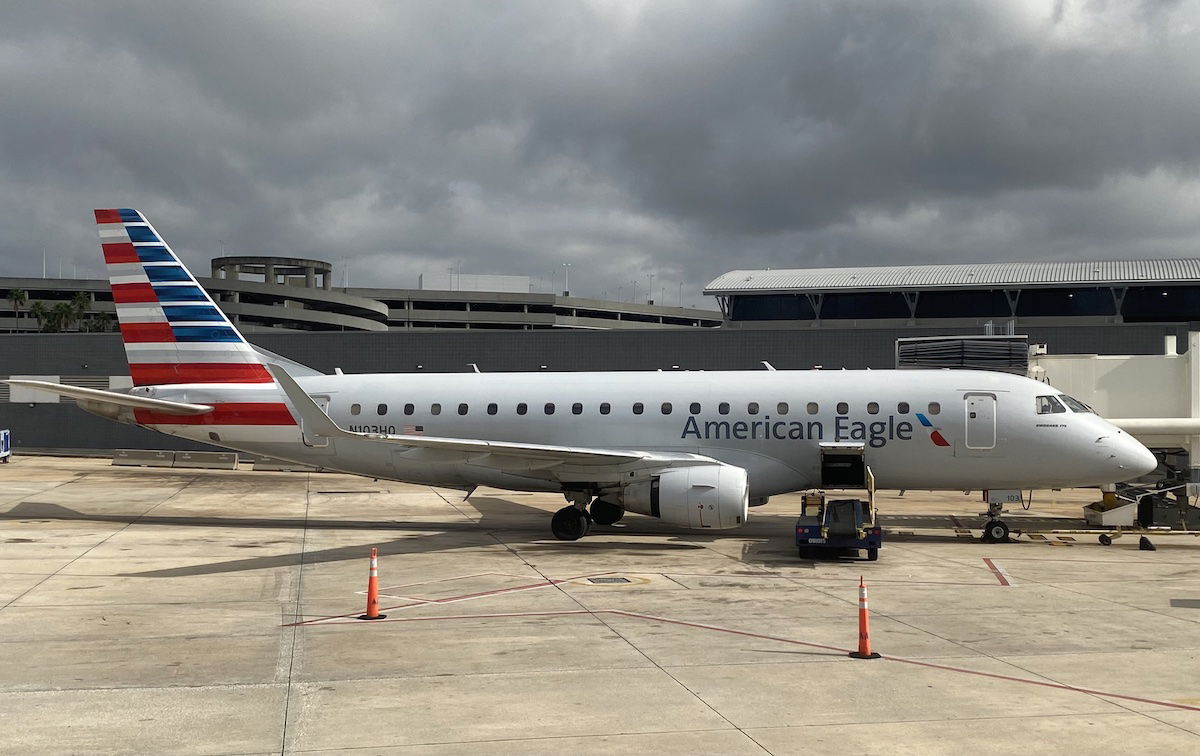
SkyWest proposes subsidiary with 30-seat CRJ-200s
SkyWest has filed with the United States Department of Transportation (DOT) requesting permission to start a subsidiary that would operate as a Part 135 operator. For context, airlines are generally Part 121 operators, which allows them to operate regularly scheduled flights with aircraft that have 30+ seats. Meanwhile a Part 135 operator is a commuter operator with aircraft that have 30 or fewer seats.
So what’s SkyWest’s plan here?
- SkyWest wants to configure 50-seat CRJ-200 regional jets to instead feature just 30 seats, keeping them under the limit for being a Part 135 operator; in a way this isn’t that different than how United “converted” some CRJ-700s into CRJ-550s in order to comply with the pilot scope clause
- SkyWest wants to start this operation in October 2022 with up to four aircraft, and have a fleet of nearly 20 aircraft by the spring of 2023
- SkyWest would then be able to hire pilots with “just” 500 hours of experience to fly these planes, rather than needing pilots with 1,500+ hours
- SkyWest is marketing this to the DOT as an opportunity to offer frequent service to smaller communities that may otherwise be losing service due to the pilot shortage
- This would allow SkyWest to keep its planes flying, train more pilots, and to presumably pay these pilots significantly less (regional airline pay has skyrocketed during the pandemic)
- It sounds like SkyWest would operate these flights independently, rather than under the banner of American Eagle, United Express, etc.
On the surface this seems like a smart and creative idea. To be clear, I don’t think safety should ever be compromised, so I don’t want to make that remark flippantly. However, I agree with those who think that the hour requirements for airline pilots need to be overhauled.
Someone being a Cessna flight instructor for 1,500+ hours (helping people get their private pilots license) doesn’t make them a better pilot than someone with 750+ hours who spent all that time training to become an airline pilot, practicing every possible emergency scenario, etc.
I’m curious to see if this gets approved by the DOT. On the one hand, this request seems in line with the rules, and on that basis should logically be granted. On the other hand, SkyWest is clearly trying to circumvent requirements by literally ripping seats out of planes, so we’ll see how the DOT feels about this.
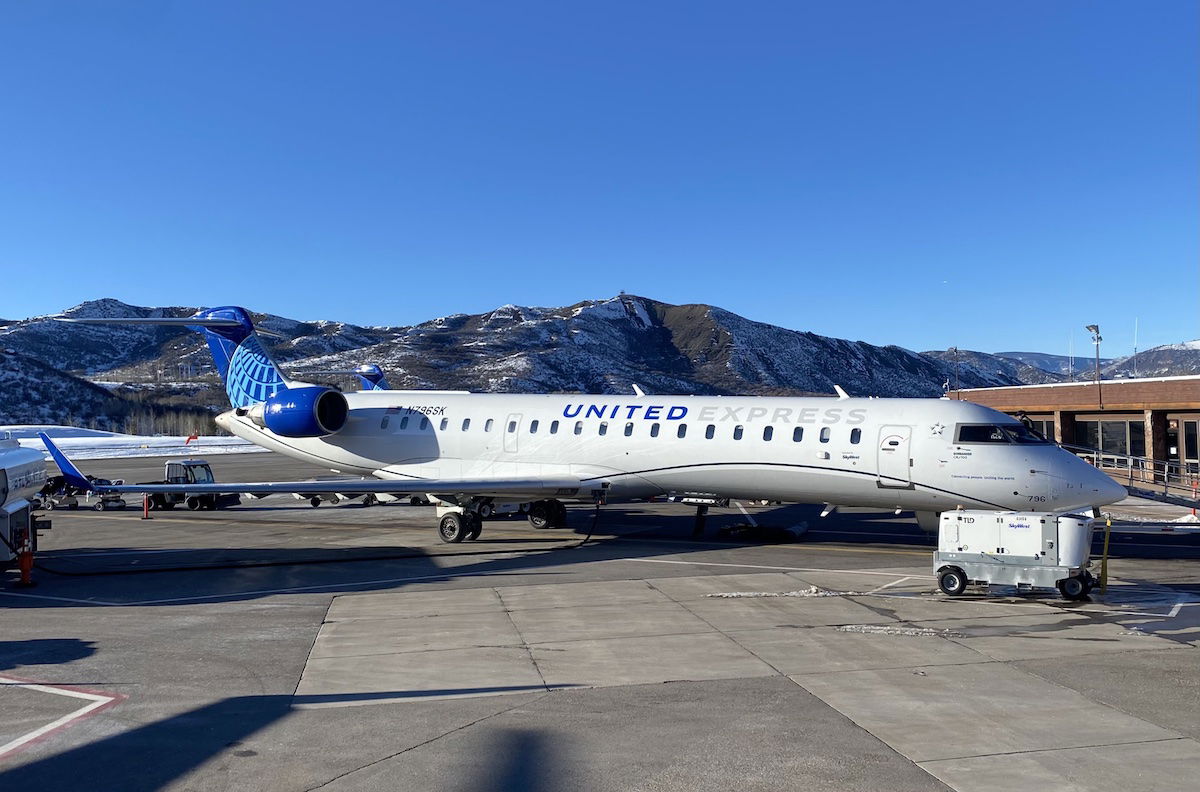
Bottom line
SkyWest is requesting permission with the DOT to launch a new subsidiary. Rather than being a Part 121 operator like most airlines, this subsidiary would be a Part 135 operator, allowing the airline to hire pilots with only one-third as many hours. This would be possible by exclusively flying planes with 30 or fewer seats.
Let’s see how this works out.
What do you make of SkyWest’s plan?
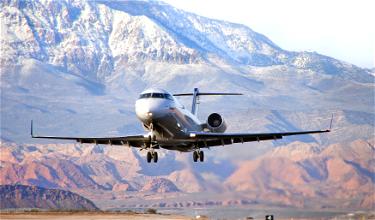

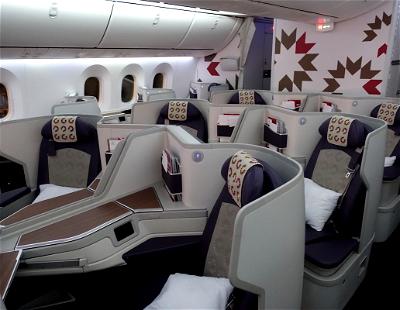
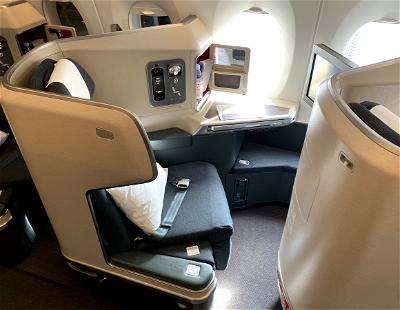
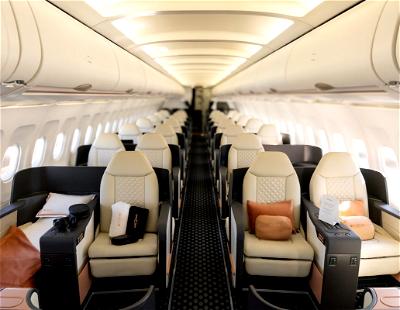
Just an excuse for SkyWest to pay pilots less. News comes just after Envoy, PSA and Piedmont offer to pay pilots DOUBLE what Skywest is paying.
This appears to be a subterfuge for SkyWest to use low time pilots for substandard pay scales.
I agree that a better standard is needed but why not offer competitive wages so as to attract the best candidates
And how is this going to work in a world of $100USD plus p/bl oil? Even with EAS money it's going to be a tough break even, much less profit.
Has SkyWest retained IT pros to build a res system to sell seats (since the relationship with the big three will be interline only)?
Are they going to use legacy SkyWest employees to staff below the wing?
Well 500 hours sure doesn't seem like much when you consider the responsibility (passengers) these pilots are given.
An investment by airlines such as SKW into various flight schools, wherein, the instructors are trained in SKW’s CRM methods and they in turn train the next group of fledgling pilots, and so on. Just makes sense.
Said schools could supply RJ-200 CPTs and training videos and CPT system knowledge tests to instructors with 400+ hours to train on in anticipation of being hired at SKW. Thus instilling SKW CRM, Turbine engine management and...
An investment by airlines such as SKW into various flight schools, wherein, the instructors are trained in SKW’s CRM methods and they in turn train the next group of fledgling pilots, and so on. Just makes sense.
Said schools could supply RJ-200 CPTs and training videos and CPT system knowledge tests to instructors with 400+ hours to train on in anticipation of being hired at SKW. Thus instilling SKW CRM, Turbine engine management and CRJ-200 emergency procedures before they show up for training. These small investment partnerships like this, at part 141 schools, could pay huge dividends for the airline, the less serviced small markets, the FAA and make pilots more than ready to start turbine training at say 500, 600 or 700 hours.
If we are realistic; after 750 hours in a Cessna teaching primary training, the instructors learning curve is flat line. Placing experienced check pilots as Captains with these newer pilots, (which is what airlines do already), will meet all safety requirements already in place by FAR’s. We need to allow the FAA to oversee this industry not Congressional non-pilots and especially not the Media.
No airline wants to exercise unsafe practices, It just does not make fiscal sense.
I got my Commercial SEL with IFR through the University of Oklahoma in 2011. Right before they changed the rules to 1500 hours. It took me around 15 months from start to finish, flying around 2 times a week to get that far. I'm only sitting around 220 flight hours (haven't flown in years.) When I started my license, that was the initial plan. Do your 250 hours Commercial MEL and then get hired on...
I got my Commercial SEL with IFR through the University of Oklahoma in 2011. Right before they changed the rules to 1500 hours. It took me around 15 months from start to finish, flying around 2 times a week to get that far. I'm only sitting around 220 flight hours (haven't flown in years.) When I started my license, that was the initial plan. Do your 250 hours Commercial MEL and then get hired on at a regional carrier. Once the rules changed, a lot of people dropped out. The idea of slogging it as an instructor pilot making $10-15 an hour for a couple years just wasn't in the cards for me either. If I was about 10 years younger and this was a possibility, I'd consider going back and finishing my MEL to get a job flying. I'm too far into my career now to start over.
Correction 2010, not 2011. Sorry!
I cringe at the taxpayers' money wasted on some of these EAS routes. Some of them are 60 miles from a mainline airport which means if you're half way between, you can go in one direction for EAS service and the same distance to a "real" flight and millions of people in the US drive 30 miles to their airport as a matter of course.
A handful of people are getting massive subsidies.
In a...
I cringe at the taxpayers' money wasted on some of these EAS routes. Some of them are 60 miles from a mainline airport which means if you're half way between, you can go in one direction for EAS service and the same distance to a "real" flight and millions of people in the US drive 30 miles to their airport as a matter of course.
A handful of people are getting massive subsidies.
In a rational world, this would be a good time to reconsider the wisdom of the EAS program, but most of the cities are rural and well connected politically.
Contour and JSX already do this by flying downsized jets. Contour from 37 to 30 seat EMB-135's and JSX from 50 to 30 seat EMB-145's.
But all this is only holding back the day of reckoning as these air frames wear out with nothing to take their place.
Lower the standard to 250-500 hours. We see pilots choking that have 8-10 thousand hours. Or have a 60+ year old pilot as a mentor for the co-pilot. Time to think out of the box
If skywest would start paying a decent wage, they would get and retain more pilots. Management is making money hand over fist, and sitting here trying to circumvent the rules because they can't retain pilots. The "pilot shortage" is really a shortage of people willing to work for the garbage pay that skywest has enjoyed paying for too many years.
1500 was a dumb idea from the start. Right now...
300 hours, IFR, CRM, multi-engine, all ratings - NOT Qualified
100 hours ME, some IFR + 1000 hours in a small single engine plane by yourself - QUALIFIED
The air force lets pilots with a few hundred hours fly fighter jets. Army attack helicopters same. Best pilots in the world.
Clearly good training beats hours and hours of nothing flying.
What is the profit-sharing arrangement, if any, SkyWest has with Delta, United and American, particularly on essential air service routes? Does Delta pay SkyWest to fly Delta Connection routes or does SkyWest give Delta percentage of the money they receive? I could see SkyWest thinking less passengers is more profitable to them if they don't have to pay Delta any longer.
The routes in question so far are Essential Service routes so Skywest keeps the money on the local route the award is for, as in Hays, KS to DEN. For everyone fly on a ticket from Hays to wherever, there's a revenue-sharing arrangement between United and Skywest.
Delta largely has walked away from EAS flying. United has clung the most to it which is why they are dropping the most cities. American is in between.
Delta saw that the regional airline industry was not sustainable long term the way it was structured 10 years ago which is why Delta started getting rid of 50 seat RJs and only has several dozen left now. They also acquired the 717s which each replace...
Delta largely has walked away from EAS flying. United has clung the most to it which is why they are dropping the most cities. American is in between.
Delta saw that the regional airline industry was not sustainable long term the way it was structured 10 years ago which is why Delta started getting rid of 50 seat RJs and only has several dozen left now. They also acquired the 717s which each replace about the capacity of two 50 seat RJs. Delta's direct order for A220s was recognition that a 110 seat aircraft has a viable place in the mainline fleet while neither American or United have recognized that need. American and United have 250 more regional jets in their contracted fleets than Delta.
Excuse me - I meant 500 hour copilots in airliner cockpits--which is not much better IMHO.
This is a blatantly transparent attempt to skirt a safety rule that came about as a direct result of a 2009 Colgan fatal accident that killed 50 people while attempting to land at the Buffalo airport. It was found that mistakes by the crew, which included a low-time copilot, were primarily responsible for the accident. In response, the ATP requirement was raised from 250 to 1500 hours. This proposal would put 250 hour copilots back...
This is a blatantly transparent attempt to skirt a safety rule that came about as a direct result of a 2009 Colgan fatal accident that killed 50 people while attempting to land at the Buffalo airport. It was found that mistakes by the crew, which included a low-time copilot, were primarily responsible for the accident. In response, the ATP requirement was raised from 250 to 1500 hours. This proposal would put 250 hour copilots back in airliner cockpits, and for this reason I sincerely doubt that DOT will go along.
Both pilots involved in the Colgan fatal accident had over 1,500 hours....... (captain 3,379, FO 2,244). European airlines put newly minted commercial pilots in the FO seat of A320s and B737s routinely.
I am also a bit confused about the requirement. So... I could take a 787 and lop it down to 30 seats and meet the same requirement? Is the requirement only based on # of souls at risk, or I assume there are other requirements at stake (obviously the pilots have been trained on said aircraft, blah blah blah)?
There's also a gross weight limitation.
Still no one has mentioned the 3 best thing that can ever happen with Part 135.
NO TSA
NO TSA
NO TSA
if you connect to a normal (part 121) flight, you will have to go through security.
This design does allow small airports to eliminate the TSA and have flights arrive at a centralized area where passengers have to go through a security checkpoint to board other flights.
Unless the connecting airport design allows direct exit to the street for passengers arriving from these uncleared small cities, they have to go through security anyway....
if you connect to a normal (part 121) flight, you will have to go through security.
This design does allow small airports to eliminate the TSA and have flights arrive at a centralized area where passengers have to go through a security checkpoint to board other flights.
Unless the connecting airport design allows direct exit to the street for passengers arriving from these uncleared small cities, they have to go through security anyway.
as for the comment below, yes, taking 40% of seats off of a plane is going to increase comfort. I doubt if there will be much nicer seats but there will be more space. The solution could involve putting some comfort plus or first class seats on the plane - but that will be Skywest's choice since the flights will not be controlled by the major carrier (AA, DL, UA) as some have reported
I would like to know what the seating arrangement on the CRJ200 would be? They just going to pluck those 20 seats out? Or could they take that room and finally turn the CRJ200 into something enjoyable to fly in and add some first class and/or comfort+ type seats - comparable to the Airbus A220? In my 6 yrs of heavy flying I avoid the '200 like the plague. Give me the 700/900 any day.
I doubt very seriously they're going to reconfigure the planes. I suspect they'll just take out the last 5 rows. The planes are too old and we're talking about EAS markets where there's an 90 minute flight and demand is so low, Skywest does not have to worry about turning 20 people away.
My 17 year old son wants to pilot, might be out of luck with his first choice (almost too tall for the Air Force). Skywest has agreements with several local universities with flight programs, we're headed soon to tour them. I applaud Skywest for creatively trying to help the shortage.
Safety must be the first concern.
This is a creative solution to get a little more life out of 50 passenger CRJs and to get some more pilots into the commercial pilot pipeline.
Note that this is not a new rule; other airlines, most smaller, operate under FAA part 135 which is how Skywest would operate these flights.
500 flight hours is well in excess of what it takes to get all of the ratings to operate a commercial aircraft...
This is a creative solution to get a little more life out of 50 passenger CRJs and to get some more pilots into the commercial pilot pipeline.
Note that this is not a new rule; other airlines, most smaller, operate under FAA part 135 which is how Skywest would operate these flights.
500 flight hours is well in excess of what it takes to get all of the ratings to operate a commercial aircraft under airline operations. There are thousands of students that are graduating from university pilot training programs which allow a pilot to start flying at 1000 hours for a regional airline so this reduction is half of what they would be required to have to fly larger regional jets - where most university pilot grads start their commercial careers.
This will result in higher priced flights for flights from small cities; the 50 seat CRJ and ERJ jets are already the most expensive aircraft by seat in the US airline fleet but taking 20 seats off will make costs even higher. Cities that want to retain air service will likely have to pony up some of their own money although some will get some federal money via the Essential Air Service program.
THe other result is that many small cities may be connected to the national air transportation system via a codeshare (not an exclusive partnership such as with American, Delta or United) but they will likely only be able to justify service to one airport and likely the closest large hub.
The final result is that pilot wages for new entrants are going up - they were ridiculously low pre-covid which is part of why there were so few young people that wanted to become pilots - while airlines appear to be chipping away at the highest paid pilots in part by increasing workload.
There is no easy solution but this is one of the better solutions to fix some of the problems affecting US aviation.
The part I am struggling with is 500 hours is roughly 3 months. Three months just seems absurdly low. If those three months were during the summer in Maine does that mean they would see their first snowstorm flying with passengers on board?
500 hours is not 3 months. Usually it take a at least a year to get all your ratings, which is about 250 hours of flight time. Then a pilot would have to fly for another 250 hours of experience building. Not saying I like the plan, but it is not 3 months of flight time
I still don't understand where all the pilots went. Airlines took billions to maintain their payroll during the pandemic. How did all these pilots just disappear overnight?
To me, the real problem is we have way too many airports. I get the prestige factor of having an airline with a real airline serving it (as opposed to Cape Air) but there is so much duplication. It's like Amtrak. If the politicians would allow Amtrak to...
I still don't understand where all the pilots went. Airlines took billions to maintain their payroll during the pandemic. How did all these pilots just disappear overnight?
To me, the real problem is we have way too many airports. I get the prestige factor of having an airline with a real airline serving it (as opposed to Cape Air) but there is so much duplication. It's like Amtrak. If the politicians would allow Amtrak to eliminate service to most of the country, trains would be much more profitable.
Within an hour's drive of my house, I can fly out of four airports (DTW, FNT, MBS and LAN). Three of the four airports (FNT, MBS and LAN) are small regional airports; two of them (MBS and LAN) have flights of about 10-12 minutes to DTW. I think the buses that United and American are using in some markets make more sense (and cents).
There was a pilot shortage BEFORE the pandemic.
And then they early retired the 60-65 demographic.
And then they fired the pilots who refused to get "vaccinated."
And with a full year of lockdowns no one was getting any hours.
And some pilots just gave up and went to 9 to 5 jobs.
How is it like Amtrak?
I'm quite sure we're nothing near having too many train stations.
indeed, all those bustling stations like Glasgow, Montana, Devils Lake, North Dakota, and Price, Utah. What a waste of money to pay all those employees to staff those stations.
The airlines got roughly 70% of their payroll costs covered by the Payroll Protection. They still had to pay the other 30% and alllllllllllll their other fixed costs, like airport rent and airplane payments with virtually no money coming in. That ended last September.
That doesn't mean that they had 100% of staff standing around. The airlines encouraged people to take massive amounts of time off without pay, but with their healthcare covered.
...The airlines got roughly 70% of their payroll costs covered by the Payroll Protection. They still had to pay the other 30% and alllllllllllll their other fixed costs, like airport rent and airplane payments with virtually no money coming in. That ended last September.
That doesn't mean that they had 100% of staff standing around. The airlines encouraged people to take massive amounts of time off without pay, but with their healthcare covered.
As things started the first glimmer of looking up, they started calling pilots back very slowly and having them work essentially part time so they could stay current.
Part of the pilot problem today is a training backlog. There simply aren't enough simulators and check pilots to bring back pilots fast enough. So when they talk about "pilot shortage" it doesn't necessarily mean they don't have pilots on the payroll. Sometimes it means they have pilots sitting at home, but collecting their guaranteed minimum hours, waiting for time in the simulator to get current again.
Presumably, they could cut costs even further by having no flight attendant. Is a flight attendant required on planes of 30 or less passengers? Cape Air does this and only has 1 pilot with no first officer/co-pilot and no flight attendant. I'm not sure if I want to fly a CRJ-200 with only 1 pilot. That's why I avoid Cape Air.
When I flew Cape Air a few years ago, there were two pilots. It was a 9 passenger Cessna, which is the workhorse of their fleet.
Also, flying CRJ-200's with only one pilot is not under discussion. I'm not sure where you got that idea from.
Almost zero jets are single pilot certified. Just a few of the little slow ones
Cabin crew are required on aircraft with more than 19 seats, so that requirement will not change.
Do you mean Cape Scare? https://www.capecodtimes.com/story/news/2008/03/22/former-cape-air-pilot-sent/52477489007/
Flight attendants are required starting at 20 seats. That's why there were all those Metroliners and Beech 1900's with 19 seats.
i would argue that the bigger issue in terms of the pilot shortage is ableist restrictions from the faa and icao that prevent a decent amount of the younger population from being eligible to be pilots (for instance ableist rules against adhd even with proper medication) imo but maybe that’s just me, still interesting to see the solutions here
My childhood dream was to become a pilot. Red-green colorblindness dashed that dream to bits. Which might be a good thing because apparently all those lights on the airfield lining the runways and taxiways are not actually the same color.
I’m a pilot, working towards my commercial. I have flown with many CFIs who have gone on to the airlines.
The FAA is really not the place to be concerned about “ableist” rules. Yes, any pilot will tell you that there is a ton of room for improvement in medical certs (for example, being diagnosed once with ADHD when 5 years old with no medication/treatment or subsequent issues should obviously not prevent someone from...
I’m a pilot, working towards my commercial. I have flown with many CFIs who have gone on to the airlines.
The FAA is really not the place to be concerned about “ableist” rules. Yes, any pilot will tell you that there is a ton of room for improvement in medical certs (for example, being diagnosed once with ADHD when 5 years old with no medication/treatment or subsequent issues should obviously not prevent someone from getting a class 1), but some of the rules are exceedingly appropriate.
For example, that ADHD pilot on medication … the fact that he needs medication to function normally on a daily basis tells us that he definitely shouldn’t fly without it, but who exactly do you think is confirming that he is properly medicated during all flight times? Having a prescription for medication doesn’t guarantee that you actually take it properly every single day (on the contrary, many people on daily meds have an occasional day where they skip for whatever reason, including simply forgetting). So if this ADHD pilot has his bag with his meds stolen/lost or just forgets to take his meds while rushing out of the hotel to get to the plane … you’ve now got someone who is unsafe to fly, and absolutely NO way for anyone to discover that. The pilot certainly has no incentive to be honest about skipping his meds that day, and every incentive to just get in the cockpit anyway.
Again, plenty of room for improvement on medical cert rules. But I don’t want to fly on the plane of someone who may or may not be adequately medicated and safe to fly, and I think it’s insane if you do. “Ableist” issues don’t register when other people’s lives are on the line.